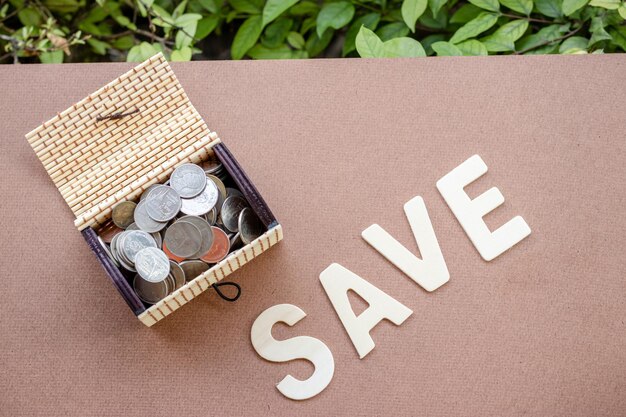Decoding HYSA: How Much Money Should You Keep in a High-Yield Savings Account?
When it comes to managing your finances, a high-yield savings account (HYSA) offers an appealing option, characterized by higher interest rates compared to regular savings accounts. However, figuring out how much money to stash in one isn't always straightforward. Let's explore the ins and outs of HYSAs while also addressing the perennial question: How much should you really keep in a high-yield savings account?
Why Consider a High-Yield Savings Account?
If you're contemplating whether to open a high-yield savings account, start by understanding its advantages:
- Higher Interest Rates: HYSAs typically offer better interest rates than traditional savings accounts, allowing your money to grow faster.
- Liquidity: Easy access to your funds when you need them, a key advantage over other investment vehicles like CDs.
- Safety: Most HYSAs are FDIC-insured, ensuring your money is safe up to a specified limit.
- Goal Setting: Perfect for saving towards specific goals, like a vacation fund or an emergency cushion.
With these benefits in mind, it leads to the question: How much should one actually keep in a HYSA?
Key Factors Influencing the Amount
Determining the right amount to keep in a high-yield savings account depends on several personal and financial factors:
1. Financial Goals
- Short-term Goals: If you're saving for a short-term goal, such as a vacation or a new gadget, you might want to deposit just enough in your HYSA to cover these expenses.
- Long-term Goals: For long-term objectives like home renovations or education expenses, consider keeping a larger amount to leverage compound interest over time.
2. Emergency Fund
- 3-6 Months of Expenses: A common rule of thumb is to maintain three to six months' worth of living expenses in your HYSA. This strategy is particularly useful for addressing unexpected situations, such as medical emergencies or sudden job loss.
3. Risk Tolerance & Investment Strategy
- Some prefer to hold more cash as a safety net, especially if they have a low-risk tolerance or if their other investments are volatile.
4. Income Stability
- Individuals with variable incomes, such as freelancers, might opt to keep a larger sum in their HYSA for added security during leaner months.
5. Interest Rates & Inflation
- Consider keeping a balance that maximizes interest earnings, yet also accounts for inflation so your savings retain purchasing power over time.
How to Optimize HYSA Usage
Once you've figured out how much to deposit in your HYSA, it's crucial to manage and optimize these funds effectively:
Evaluating HYSA Interest Rates
- Compare Rates: Regularly check and compare the interest rates offered by different institutions to ensure your HYSA is still the best choice.
- Interest Compounding: Look for accounts that offer daily or monthly interest compounding for maximum growth potential.
Monitoring Account Fees
- While many HYSAs have minimal fees, it's important to ensure that you understand any potential charges and how they might affect your savings.
Utilizing Automation
- Automatic Transfers: Set up automatic transfers from your checking account to your HYSA to steadily build your savings without effort.
- Savings Goals: Utilize account tools that help you earmark funds for specific goals or to track your progress.
Common Missteps with HYSAs
As with any financial decision, there are common missteps consumers might encounter:
- Overfunding the HYSA: While it's great to have savings, putting excessive amounts in a HYSA might not be ideal. Consider spreading your wealth across various investment instruments.
- Ignoring Inflation: Make sure your savings account outpaces or at least matches inflation to retain purchasing power.
- Neglecting High-Interest Debt: It's often more prudent to first address any high-interest debt, as the costs of debt can negate the benefits of interest from a HYSA.
Practical Tips for HYSA Management 💡
Here's a consolidated list of practical tips to guide you in managing a HYSA effectively:
- 🏦 Pick a Reliable Bank or Credit Union: Opt for widely trusted institutions with favorable reviews and strong financial standing.
- 📊 Set Realistic Savings Goals: Define what you're saving for and the timeline, helping you determine the amount to keep in your HYSA.
- 🔄 Review and Adjust Regularly: Life changes, and so should your savings strategy. Review your needs and adjust your savings accordingly.
- 🍃 Stay Flexible: Maintain flexibility in case a better financial instrument comes along, like a higher-yield account.
Concluding Insights
Navigating the decision of how much to keep in a HYSA is integral to a healthy financial plan. The amount you ultimately choose to hold will depend on personal circumstances, goals, and financial strategy. By considering factors like your emergency fund needs, financial objectives, income stability, and current market conditions, you can make an informed decision that maximizes the benefits of your high-yield savings account.
Remember, the essence of saving is not just about stashing away cash, but ensuring it works for you. Balancing your savings between HYSAs and other investment opportunities can enhance your financial security and offer more substantial growth over time. As you develop your savings strategy, continually seek out information and remain open to adjusting your approach as your financial picture evolves.

Related Topics
- a High Yield Savings Account
- a High-yield Savings Account Amercian First Credit Union
- Are High Yield Savings Accounts Fdic Insured
- Are High Yield Savings Accounts Safe
- Are High Yield Savings Accounts Taxed
- Are High Yield Savings Accounts Worth It
- Are Hysa Taxed
- Are Hysa Worth It
- Can You Lose Money In a High Yield Savings Account
- Can You Take Money Out Of High Yield Savings Account